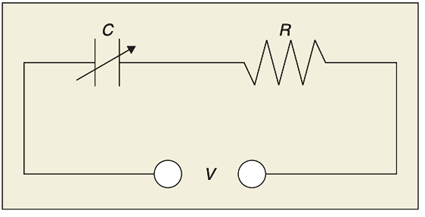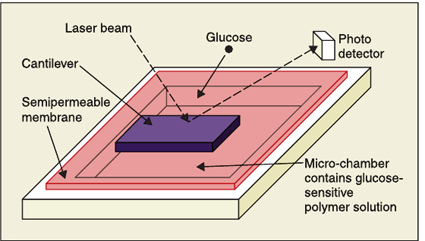Recent Advances in MEM Sensor Technology – Biomedical Applications
By Farbod Khoshnoud and Clarence W. de Silva
NOTE: This is an overview of the article, which appeared in the February 2012 issue of the IEEE Instrumentation & Measurement Magazine.
Click here to read the entire article.
NOTE: This article is the first part of a three-part series on MEMS sensors. The present article provides a general introduction to MEMS sensing and the primary sensing techniques. Next, MEMS-based bio-medical sensors are explained. This includes MEMS devices that are: designed to detect triglycerides, c-reactive protein, and glucose, respectively; bio-inspired robotic fingers with tissue softness characterization sensors for pressure measurement during surgical procedures; for counting blood cells; acoustic sensors for 2-D sound source localization; pressure measurement sensors on the wings of an insect-like flying robot; and ultra-miniature sensors for intramuscular pressure measurement.
The second part of the series will be dedicated to mechanical sensors. There, some related technologies of MEMS sensors will be discussed including compensation for environmental effects, the Casimir effect, and harvesting of energy for self-powered sensors. Also, the subject of sensor selection will be addressed. The third part will treat MEMS sensing in the thermo-fluid and electro-magnetic domains.
MEMS Techniques (non-biological)
MEMS technology provides the benefits of small size, low weight, high performance, easy mass-production, and low cost. The article reviews the characteristics and modeling of non-biological MEMS (which are useful in biomed applications, but do not sense distinctly biological phenomona). Included in these are piezoelectric, capacitive (see figure below), electromagnetic, and piezoelectric sensors.

Equivalent circuit for a capacitive sensor.
Biological Sensors
The bulk of the article is concerned with descriptions and schematic views of biological sensors. The sensors covered in the article are:
- Triglyceride
- C-Reactive Protein
- Glucose
- Force Sensor (for Protein Delivery)
- Tissue Softness
- Blood Cell Counter
- Acoustic
- Wing Pressure
- Ultraminature MEMS
One example of the coverage of biological sensors in the article is that of the glucose sensor. Two types of sensors are reviewed – membrane-based and microcantilever-based. In both of these sensor types, glucose permeates through a semipermeable membrane into a micro-chamber filled with a solution of a biocompatible glucose-specific synthetic polymer. Raising the glucose level in the chamber changes the viscosity of the solution. Changes in viscosity correspond to changes in the surrounding glucose level. In the membrane-based sensors, the vibration of a diaphragm changes with the viscosity. In the microcantilever-based version (see figure below), the vibration of the microcantilever is affected by the viscosity. A laser-photo detector pair detects the vibration of the microcantilever.

A MEMS affinity sensor for detection of glucose. Its length and width are each approximately 750 µm.
ABOUT THE AUTHORS
Farbod Khoshnoud has been a Visiting Scientist in the Industrial Automation Laboratory, Department of Mechanical Engineering, University of British Columbia (UBC), since 2007. He was a visiting researcher at the California Institute of Technology from 2009-2011. He carried out postdoctoral research in the Department of Civil Engineering at UBC from 2005 to 2007. He received his Ph.D. degree in Mechanical Engineering from Brunel University, UK. He has worked in industry as a mechanical engineer for over six years.
Clarence W. de Silva (desilva@mech.ubc.ca) is a Fellow of the IEEE, ASME, Canadian Academy of Engineering, and the Royal Society of Canada. He received the Ph.D. degrees from the Massachusetts Institute of Technology (1978) and the University of Cambridge, U.K. (1998) and an honorary D.Eng. degree from the University of Waterloo, Canada (2008). He has been a Professor of Mechanical Engineering and NSERC-BC Packers Chair in Industrial Automation at the University of British Columbia, Vancouver, Canada since 1988, and he currently occupies the Tier 1 Canada Research Chair in Mechatronics & Industrial Automation. He has authored 20 books and over 400 papers, approximately half of which are in journals. His most recently published books include Mechatronics – A Foundation Course (2010, CRC Press) and Modeling and Control of Engineering Systems (2009, CRC Press).






